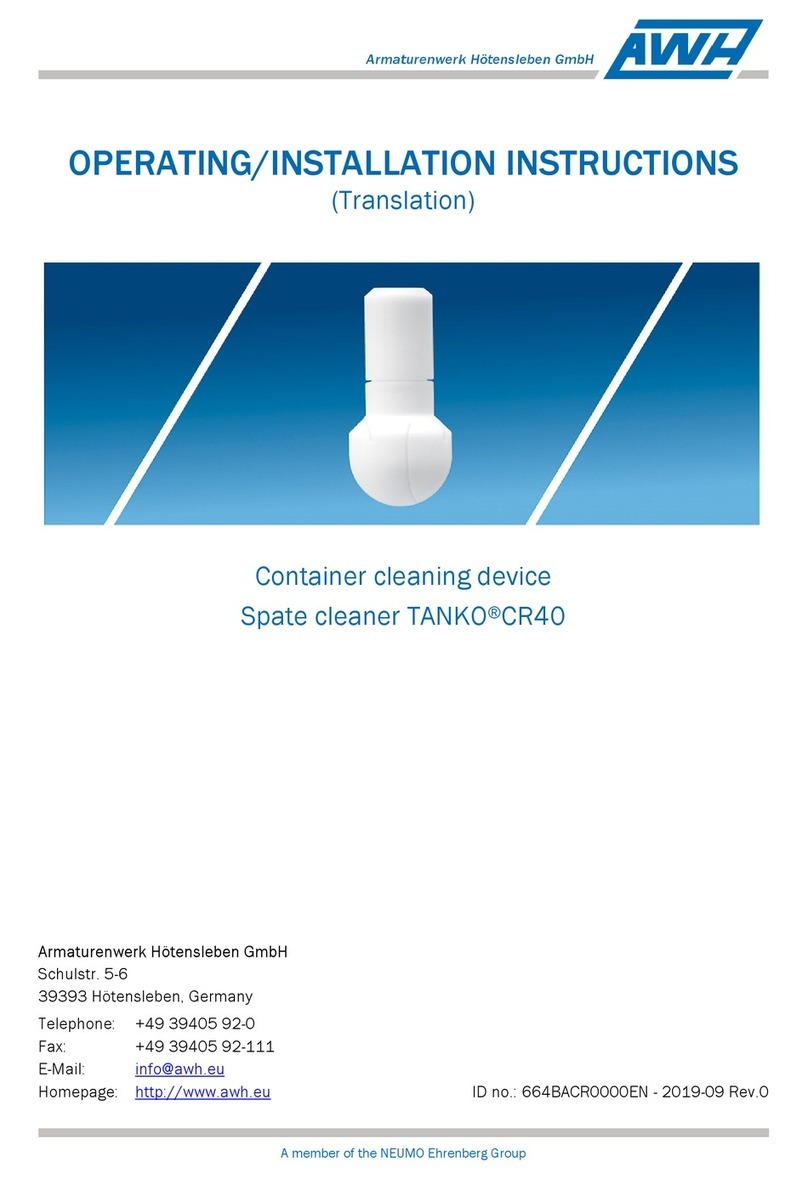
Contents Translation of the original operating/installation instructions 2016/10 I
Contents
Contents .......................................................................................................................................................I
List of Pictures ............................................................................................................................................III
List of Tables.............................................................................................................................................. IV
Abbreviations and Units.............................................................................................................................. V
1 Introduction ............................................................................................................................................. 1
1.1 Means of presentation ...................................................................................................................... 1
1.1.1 Explanation of Signal Words ............................................................................................... 1
1.1.2 Explanation of the Warnings ............................................................................................... 2
1.1.3 Pictograms and Symbols ..................................................................................................... 3
1.2 Warranty and Liability........................................................................................................................ 4
1.3 Product Names and Trademarks...................................................................................................... 4
1.4 Related Documents........................................................................................................................... 4
2 Safety....................................................................................................................................................... 5
2.1 Intended Use...................................................................................................................................... 6
2.2 Spare Parts, Replacement Parts and Accessories .......................................................................... 8
2.3 Duties of the Owner/Operating Company........................................................................................ 9
2.4 Requirements for Personnel........................................................................................................... 11
2.4.1 Personal Protective Equipment......................................................................................... 12
2.5 Identification Marking ..................................................................................................................... 13
2.5.1 Type designation................................................................................................................ 13
2.5.2 Type Plate........................................................................................................................... 13
3 Construction and Function .................................................................................................................... 14
3.1 Construction..................................................................................................................................... 14
3.1.1 CP2 Construction ............................................................................................................... 14
3.1.2 CP2S Construction............................................................................................................. 15
3.1.3 CP3 Construction ............................................................................................................... 16
3.2 General Function Description ......................................................................................................... 17
3.3 Technical data ................................................................................................................................. 18
3.3.1 Operating temperature TANKO-CP2/CP2S and TANKO-CP3........................................... 18
3.4 Cleaning Agents............................................................................................................................... 21
4 Transportation and Storage................................................................................................................... 23
4.1 Packaging......................................................................................................................................... 24
4.2 Transport.......................................................................................................................................... 24
4.3 Storage............................................................................................................................................. 25
5 Installation............................................................................................................................................. 26
5.1 Safety Notes for Installation ........................................................................................................... 26
5.2 Installation ....................................................................................................................................... 28
5.2.1 Interfaces ........................................................................................................................... 29
5.2.2 Installation Position ........................................................................................................... 32
5.2.3 Installing the Device .......................................................................................................... 32
































